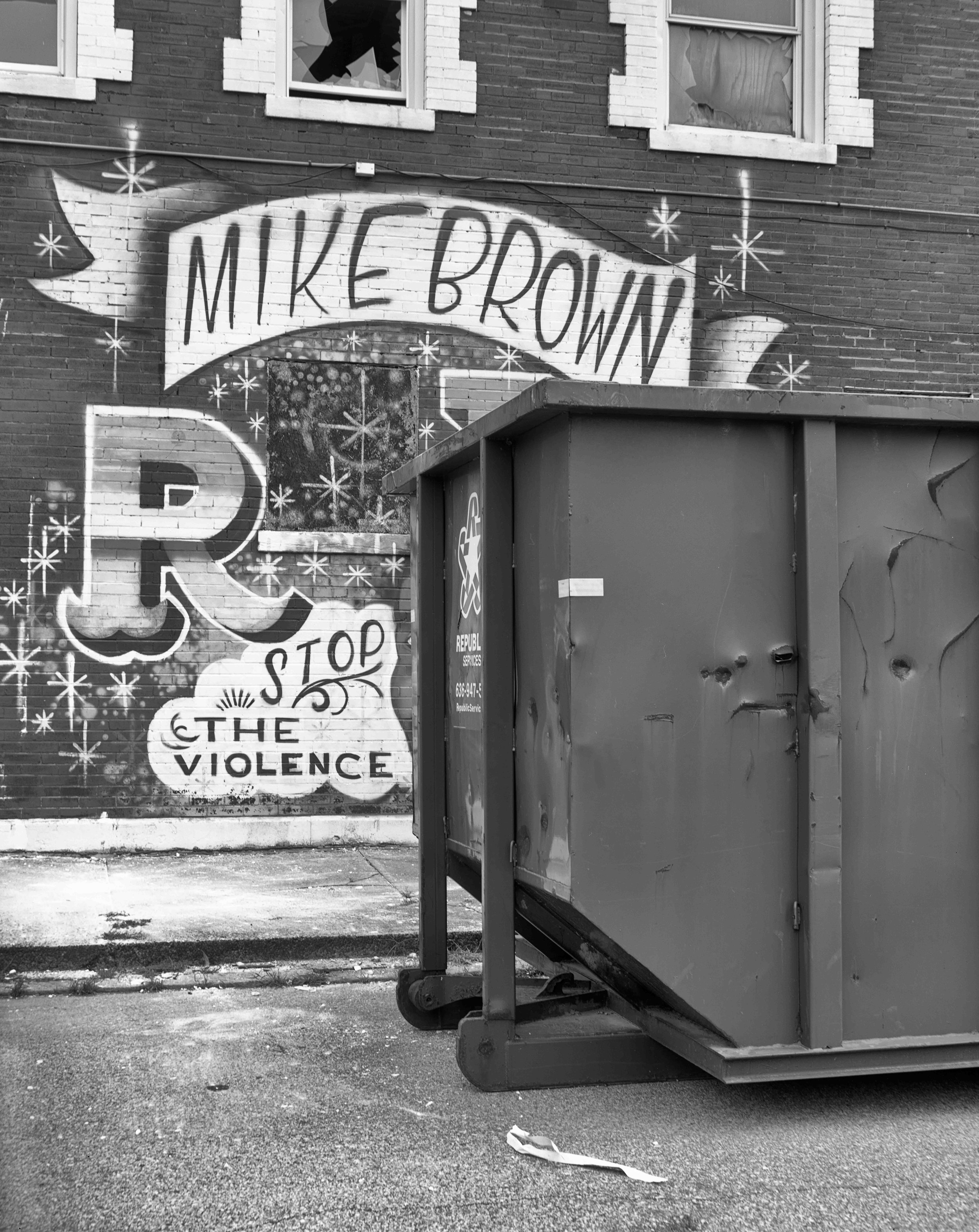I have photographed and written about this mural before. I drive by it often on a certain route along Union Avenue when I am heading into the City of St. Louis. The last time I photographed it, I was “run off” by woman who I assumed just didn’t want me photographing the mural. As I’ve considered that incident and the vague exchange we had, I have come to think she may have been concerned for my safety. She may have been warning me because is one of the areas of St. Louis with a reputation for violence. The sort of area that Springsteen meant with “…Down in the part of town where when you hit a red light you don't stop…” in his song “Johnny 99.”
When I made this photograph last weekend, using my large format 4x5 camera, a few people walked by, looking at me strangely. One man rode a bicycle along the sidewalk and we exchanged pleasantries.
Making another photograph of this mural was not in my plans. I drove by and noticed the dumpster and made a note to stop after my appointment. I used to think of documentary photography as more like news or journalism photography. I was never that type of photographer - not counting high school yearbook or local newspaper work. But documentary photography is a portion of my continuing work. I may not be photographing “breaking news,” but I am photographing slower-breaking events. I have been surprised at how often I have photographed a scene, thinking I have plenty of time to stop. Then finding the place bulldozed or burned down the next time I pass by. This has been especially true of my work in Cairo, Illinois.
I returned to this mural because the dumpster scared me. The building is probably just being renovated. But one never knows. That Jiminy Cricket voice urged me to photograph again, with the dumpster, just in case the mural becomes a ghost sign. That, plus, people have painfully short memories. If the mural goes, so might its message, slowly yet again progress. It’s inevitable that soon — if not already — someone driving by would ask, “Who is Mike Brown?”
